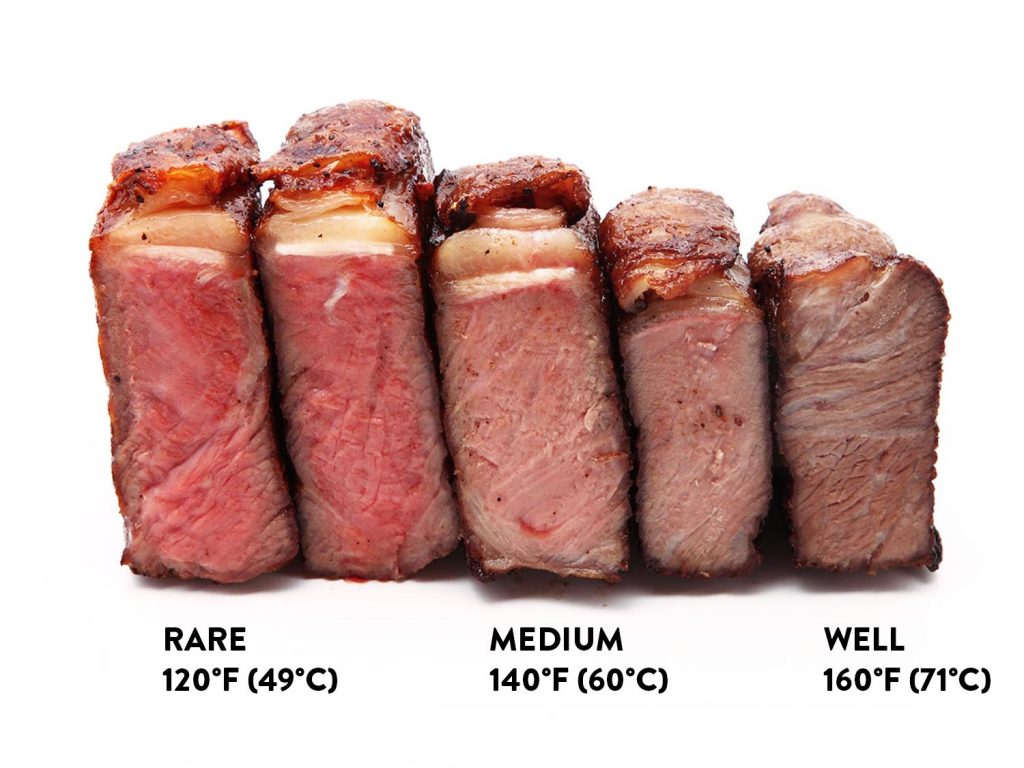

However, if your steaks aren’t too thick (less than 1.5 inches), you can go ahead and cook them over direct heat without too much worry. Bringing the steak slowly up to temp decreases the range of the temperature gradations, allowing you to bring the center temperature up to the proper level without overcooking the exterior. If you were to cook a large steak over direct high heat, there would be so much heat pumping into the steak’s edges that by the time you get the center of your steak up to your pull temp, the outside of the steak will be overcooked and dry. The reason for this lies in the temperature gradients. If you have a thick, thick steak (greater than 1.5 inches), you need to cook it with a two-stage method, preferably with a reverse sear.
Steak medium rare temp how to#
How to grill a NY strip depends in part on its thickness. That’s why they make good steaks: they can cook quickly and don’t need to be heated to collagen-melting temperatures to make them chewable.

This group of muscles, much like the rib loin, is seldom used by the cow-which means it has less connective tissue and is naturally more tender than cuts from, say, the legs or the breast of the animal (i.e. A T-bone or a porterhouse steak is a whole cross-section of the short loin, the NY strip is a cross-section of the strip loin, while a Kansas City strip is a NY strip with the bone on (a T-bone minus the tenderloin). The strip steak is from the strip loin (a section of the short loin) of the steer. The short loin lies behind the ribs and includes the strip loin and the tenderloin, as well as the bones between those two cuts.


 0 kommentar(er)
0 kommentar(er)
